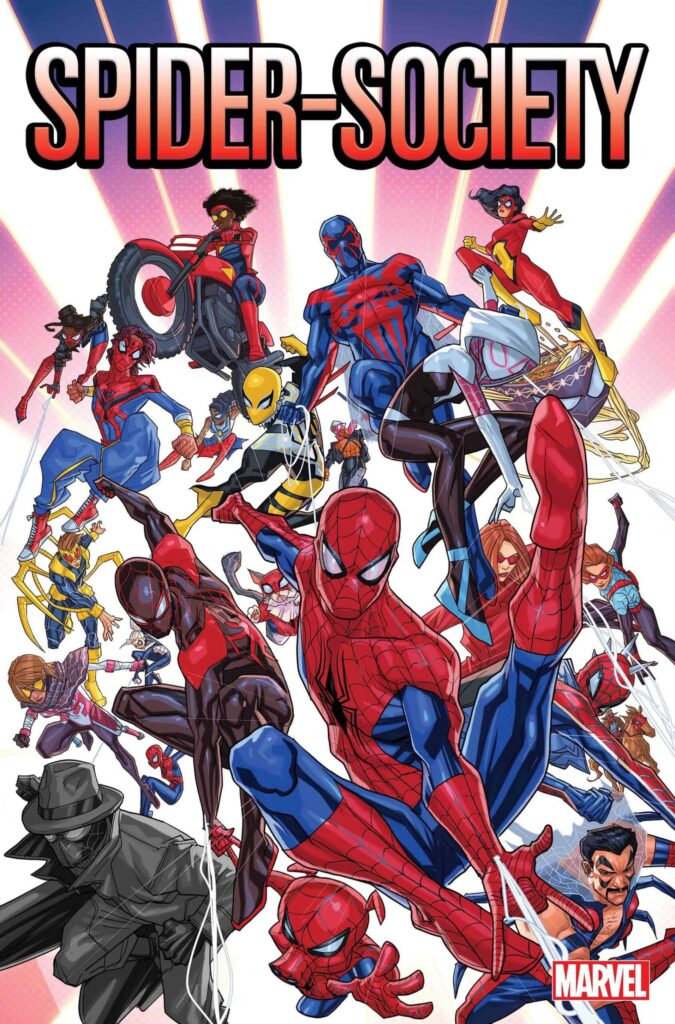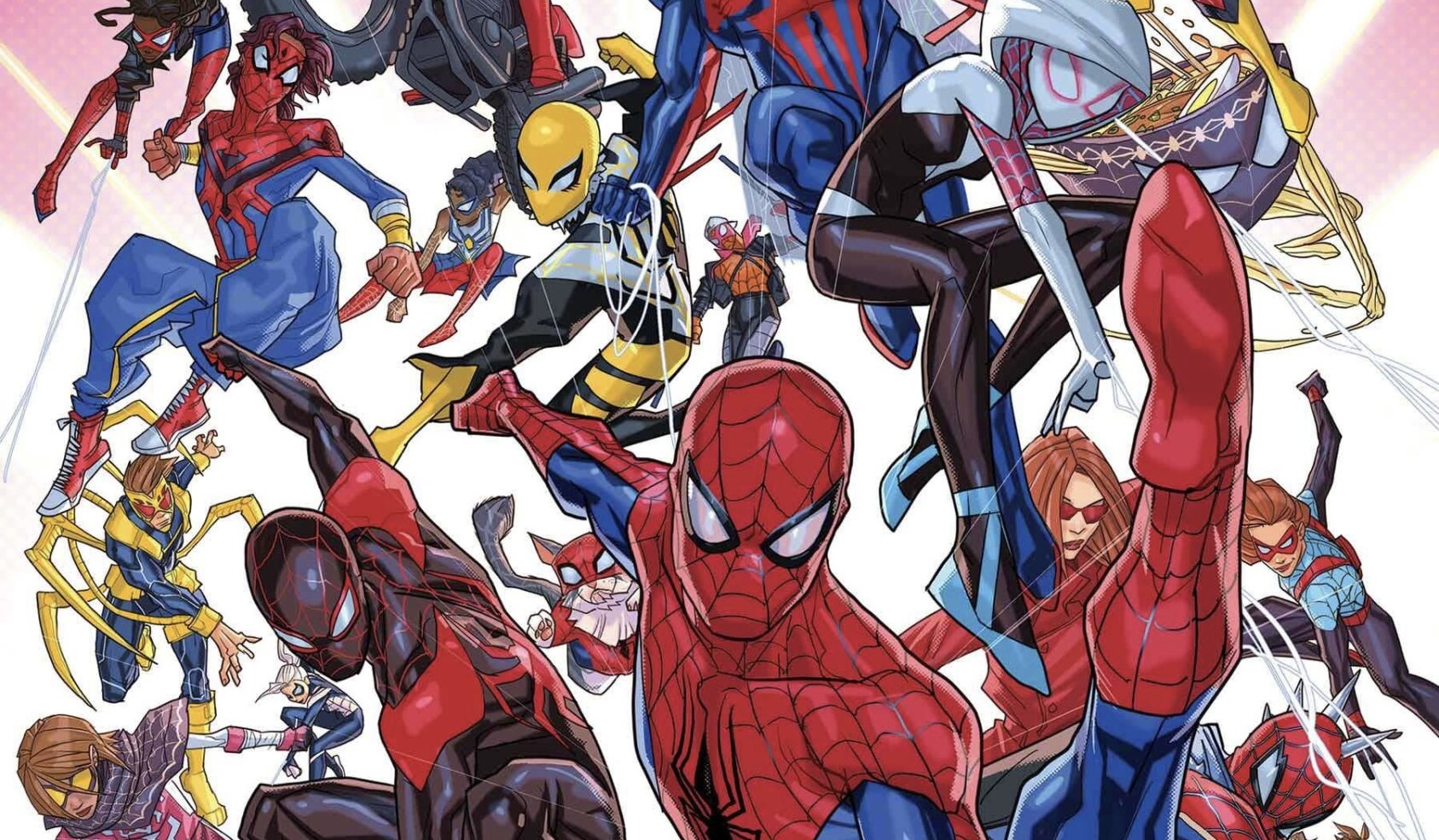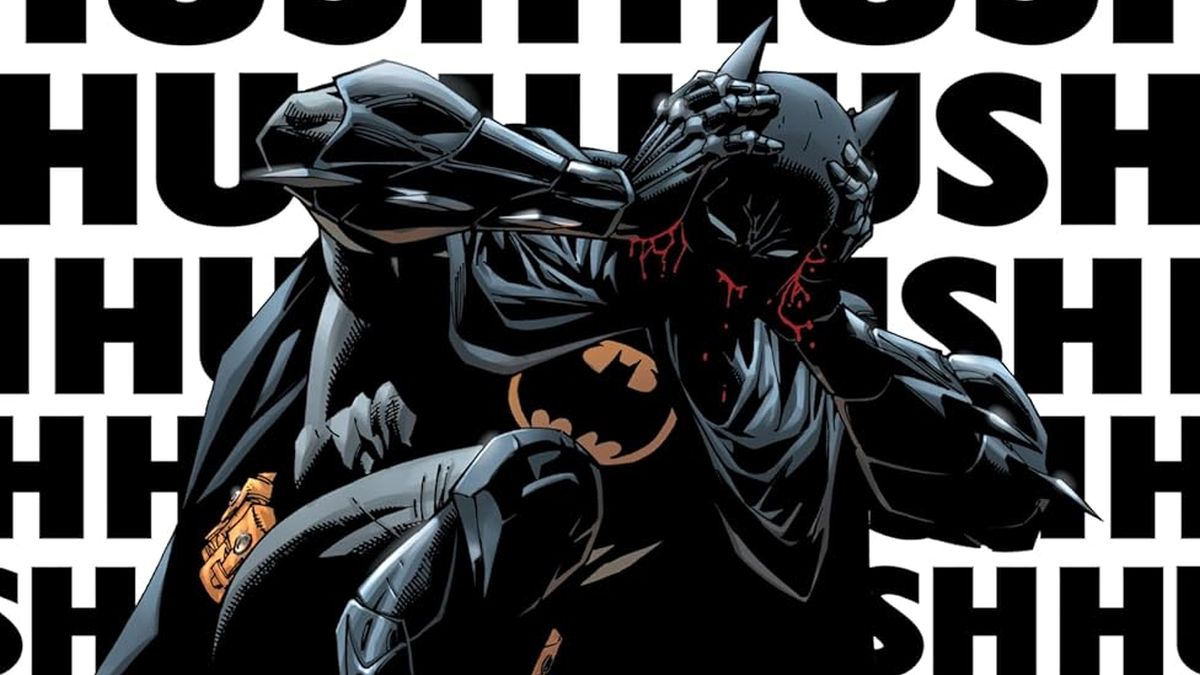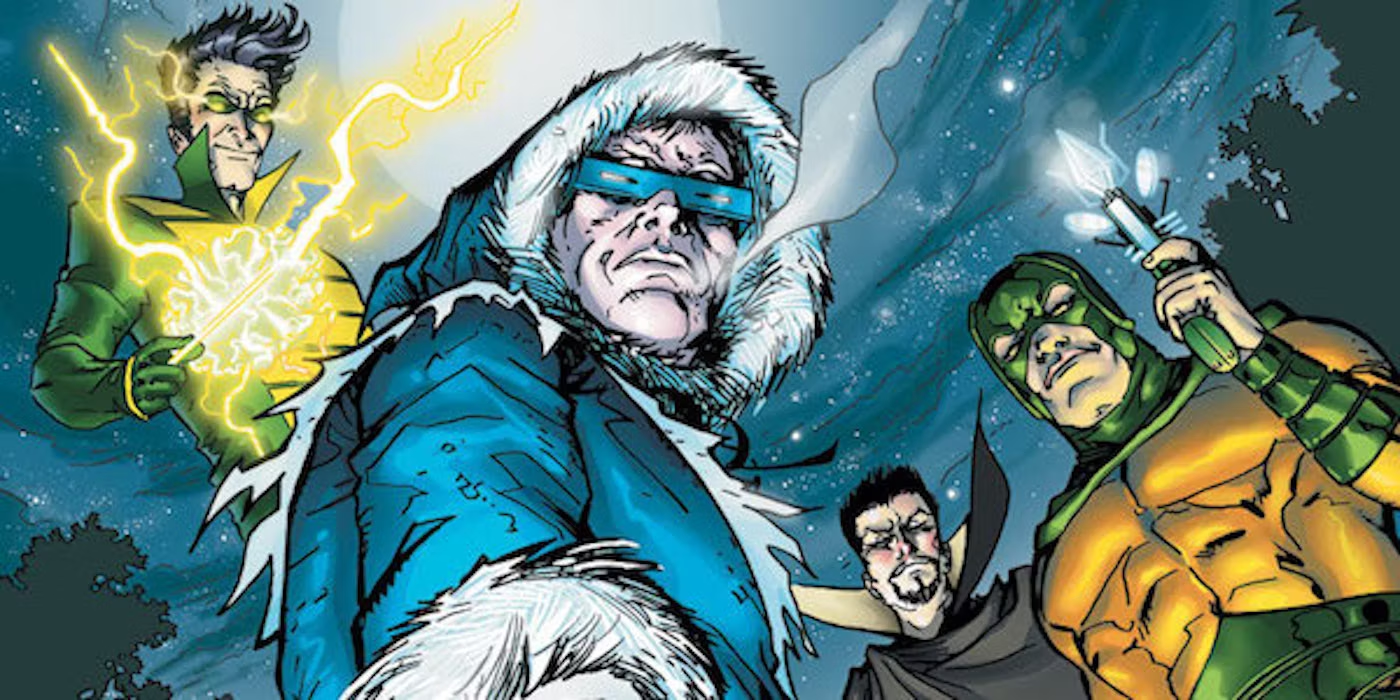SPOILER ALERT!!!
Spider-Society #1 kicks off with a familiar yet always enjoyable duo—Miles Morales and Gwen Stacy (aka Ghost-Spider)—catching up before being abruptly summoned by Madam Web. Their casual conversation quickly turns into action as they, along with other spider-heroes, are drawn into a mysterious and dangerous plot orchestrated by a gathering of villains. The issue wastes no time ramping up the stakes, with the villains launching a surprise attack on the heroes at Madam Web’s home. Despite their best efforts, the spiders find themselves outmatched, and it’s up to Madam Web and Arana to save a select group, including lesser-known characters like Web Weaver, Weapon VIII, Spider-Punk, Hunter Spider, Felicia Hardy, Spider-Woman, and Spider-Cat.

This opening issue undeniably invites comparisons to Spider-Man: Across the Spider-Verse, particularly with its ensemble of diverse spider-heroes. However, after the initial resemblance, Spider-Society begins to carve out its own identity. The narrative quickly sets the stage for what’s to come, avoiding any unnecessary delays in getting to the action. By sidelining more well-known characters, it cleverly shifts focus to lesser-known or entirely new heroes, creating a sense of intrigue about their roles and abilities.
However, the issue does stumble when it comes to tone. In a story packed with Spider-Man variants, a certain level of humor is expected. Unfortunately, here the humor often undercuts the tension, diluting the sense of peril that the plot strives to establish. The decision to reveal the existence of a spy within the first five pages also diminishes the impact of the later betrayal, stripping the moment of any significant dramatic weight. This early reveal leaves little room for the suspense to build, weakening the story’s overall impact.
Visually, Spider-Society manages to deliver solid character designs and action sequences. The artwork avoids the common pitfall of distorted, exaggerated poses often seen in Spider-Man comics, which is impressive given the sheer number of spider characters involved. However, the lack of detailed backgrounds in the majority of the scenes is puzzling. After the vibrant opening sequence with Miles and Gwen, the setting shifts to an almost featureless void, with only the colors changing to indicate different environments. While this could be an artistic choice intended to emphasize emotions, it instead makes the comic feel like it takes place in a bland, empty space, lacking the richness and depth expected in a Spider-Man story.
Spider-Society #1 offers an exciting concept—a sprawling multiversal adventure with a mix of familiar and fresh spider-heroes. While it delivers on this premise in part, the execution falls short in several areas. The uneven tone, uninspired visuals, and a plot that reveals too much too soon leave room for improvement. However, despite these flaws, the comic still captures a hint of the magic from Across the Spider-Verse, enough to keep readers curious about what might come next.




